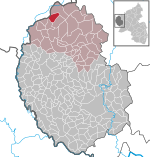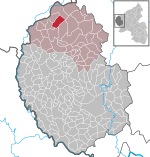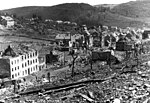The Battle of Lanzerath Ridge was fought on December 16, 1944, the first day of the Battle of the Bulge during World War II, near the village of Lanzerath, Belgium, along the key route for the German advance on the northern shoulder of the operation. The American force consisted of two squads totalling 18 men belonging to a reconnaissance platoon and four forward artillery observers, against a German battalion of about 500 paratroopers. During a day-long confrontation, the American defenders inflicted dozens of casualties on the Germans and delayed by almost 20 hours the advance of the entire 1st SS Panzer Division, the spearhead of the German 6th Panzer Army.The Germans finally flanked the Americans at dusk, capturing them. Only one American, an artillery observer, was killed, while 14 others were wounded, while German casualties totaled 92. The Germans paused, believing the woods were filled with more Americans and tanks. Only when SS-Standartenführer Joachim Peiper and his tanks arrived at midnight, twelve hours behind schedule, did the Germans learn the nearby woods were empty.Due to lost communications with battalion and then regimental headquarters, and the unit's subsequent capture, its disposition and success at delaying the advance of the 6th Panzer Army that day was unknown to U.S. commanders. First Lieutenant Lyle Bouck considered the wounding of most of his men and the capture of his entire unit a failure. When the war ended five months later, the platoon's men, who were split between two prisoner-of-war camps, just wanted to get home. It was only after the war that Bouck learned that his platoon had prevented the lead German infantry elements from advancing and had delayed by about 20 hours their armored units' advance. On October 26, 1981, after considerable lobbying, a Congressional hearing, and letter writing by Bouck, every member of the unit was finally recognized for their valor that day, making the platoon the most decorated American unit of its size of World War II.










